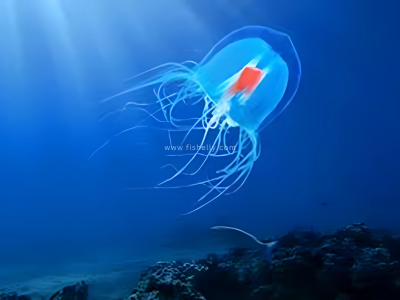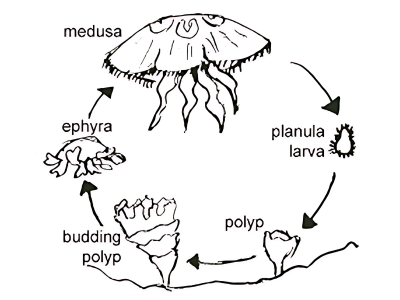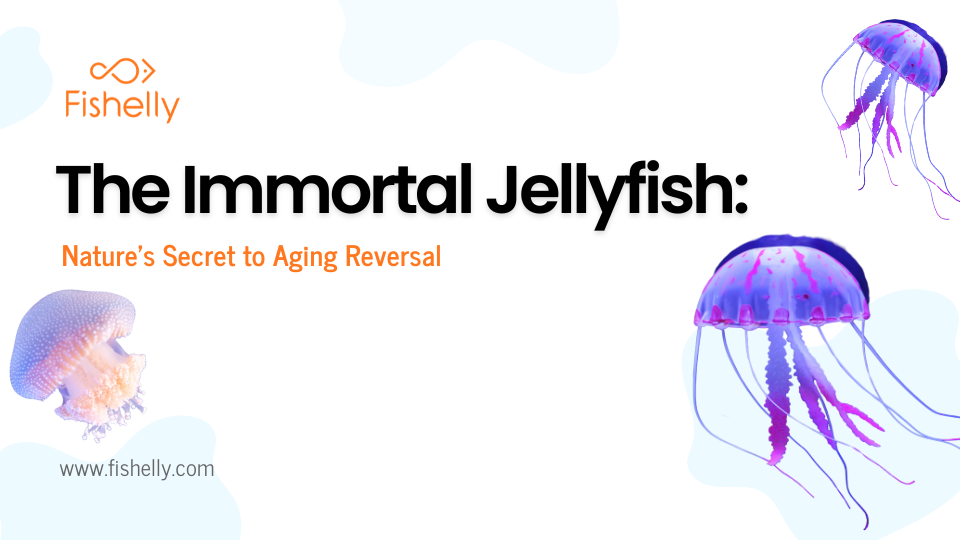The Immortal Jellyfish: Nature's Secret to Aging Reversal
Learn about the immortal jellyfish’s ability to reverse aging, its impact on regenerative medicine and cancer research, and its unique survival mechanisms.
Table of Contents
- What is the Immortal Jellyfish?
- Habitat and Distribution
- The Life Cycle of the Immortal Jellyfish
- Why is it Considered "Immortal"?
- Scientific Significance
- Adaptations and Survival Mechanisms
- Challenges in Studying the Immortal Jellyfish
- Impact on Marine Ecosystems
- Cultural and Philosophical Significance
- Can Humans Achieve Immortality?
- Faq
- Conclusion
The immortal jellyfish (Turritopsis dohrnii) is one of nature's most fascinating creatures, capable of defying the natural aging process. Found in oceans around the world, this tiny jellyfish has a unique ability to reverse its aging and start its life cycle anew, earning it the title of "immortal." In this blog, we’ll explore everything about the immortal jellyfish, from its biology and life cycle to its habitat, significance, and the scientific mysteries it holds.

What is the Immortal Jellyfish?
The immortal jellyfish is a small, transparent marine creature that belongs to the class Hydrozoa. Measuring just about 4-5 millimeters in diameter—smaller than a fingernail—it is unassuming yet extraordinary. Unlike most organisms, which age and eventually die, the immortal jellyfish can revert its cells to an earlier stage of development, effectively starting its life anew.

Habitat and Distribution
This is an incredible jellyfish found in oceans around the world, mostly in temperate and tropical waters. It is shallow-water tolerant but can thrive in deeper marine environments. Though it does not have a geographical limitation, it prefers calm seas with stable temperatures and plenty of food.
The Life Cycle of the Immortal Jellyfish
The life cycle of the immortal jellyfish is what makes it "immortal." Here's how it works:
Polyp Stage:
· The jellyfish starts life as a polyp, a small and sessile organism that attaches itself to a surface like rocks or coral.
· The polyp produces several jellyfish through budding.
Medusa Stage:
· These jellyfish break off from the polyp and grow into free-swimming adults called medusae.
· The medusa is the jellyfish form, bell-shaped body, and tentacles.
Reversal Process:
· If the medusa is under environmental stress, injury, or aging, it can return to its polyp stage.
· This process, known as transdifferentiation, is the change of its specialized cells into unspecialized cells that develop into a new polyp.
· The new polyp produces new medusae, thus avoiding death.

Why is it Considered "Immortal"?
Although the immortal jellyfish is not technically immortal, it can be eaten by predators or succumb to disease, it is biologically immortal under optimal conditions. Its ability to continuously revert to the polyp stage means it does not experience senescence (biological aging) like most organisms. This makes it unique compared to other life forms on Earth.

Scientific Significance
Scientists all over the world have been attracted to the immortal jellyfish, because it might have the answer to the aging of cells and their regeneration. The following are the main research areas:
Aging and Longevity:
Research into its process of transdifferentiation may allow scientists to unlock how to reverse or slow the process of aging in humans.
Regenerative Medicine:
Discoveries about how the jellyfish reprograms its cells may lead to new treatments for degenerative diseases or injuries.
Cancer Research:
Understanding how its cells avoid deterioration might offer breakthroughs in cancer treatments, where uncontrolled cell growth is a major challenge.
Adaptations and Survival Mechanisms
The immortal jellyfish has several adaptations that help it survive:
· Cellular plasticity: Only in the Animal Kingdom is that possible - in the immortal jellyfish.
· Environmental stability: It also can tolerate not-so-good weather by reverting into its polyp form.
· Small stature: Its puny, see-through body is hardly noticeable by larger predators.
Challenges in Studying the Immortal Jellyfish
A very interesting aspect of biology for sure, but surely not an easy one to handle:
· Size and Transparency: Its small and nearly invisible body makes it hard to observe in the wild.
· Complex Habitat: Its preference for deep or calm waters adds to the challenge of capturing and studying it.
· Laboratory Maintenance: Replicating its natural environment in labs to observe its full life cycle is difficult.
Impact on Marine Ecosystems
The immortal jellyfish plays a minor but essential role in marine ecosystems:
Food Chain: Larger marine animals like fish and turtles eat them.

Ecological Balance: As a consumer of plankton and microscopic marine animals, it helps control populations in their own environment.
Cultural and Philosophical Significance
This concept of immortality has been an inspiration to humans for centuries, and the immortal jellyfish represents the dream of defying death. It sparks curiosity and philosophical debates regarding the ethics and implications of extending human life indefinitely.
Can Humans Achieve Immortality?
While the immortal jellyfish provides insight into aging, replicating its biological mechanisms in humans is far from reality. Human aging involves complex processes that are much different from those in jellyfish. However, research is ongoing and may unlock ways to extend human healthspan and improve quality of life.
Faq
1.What is the immortal jellyfish?
The immortal jellyfish is a marine creature capable of reversing its aging process by reverting to an earlier life stage.
2.How does it reverse aging?
It undergoes transdifferentiation, where it transforms specialized cells into unspecialized cells, effectively restarting its life cycle.
3.Where is it found?
The immortal jellyfish is found in temperate and tropical oceans worldwide, usually in calm, shallow waters.
4.Why is it called "immortal"?
It can repeatedly revert to its polyp form, avoiding aging. However, it is still vulnerable to predators and disease.
5.How does it help scientific research?
Its ability to regenerate and reverse aging could provide insights into aging, regenerative medicine, and cancer treatments.
6.Can humans achieve immortality?
While humans cannot replicate this process, studying it may help extend healthspan and improve treatments for aging-related diseases.
7.What role does it play in ecosystems?
It helps control plankton populations and serves as food for larger marine animals, contributing to ecological balance.
8.What challenges are there in studying it?
Its small size, transparency, and preference for deep or calm waters make it difficult to observe and study in the wild.
9.What are its survival adaptations?
It can revert to a polyp form in stressful conditions and has a small, transparent body that helps it avoid predators.
Conclusion
The immortal jellyfish is a miracle of nature, an extraordinary ability to avoid death through its unique life cycle. It may not give humans immortality, but studying this tiny creature could revolutionize our understanding of aging, regeneration, and cellular biology. As scientists continue to explore its secrets, the immortal jellyfish remains a shining example of nature's ingenuity and resilience.















